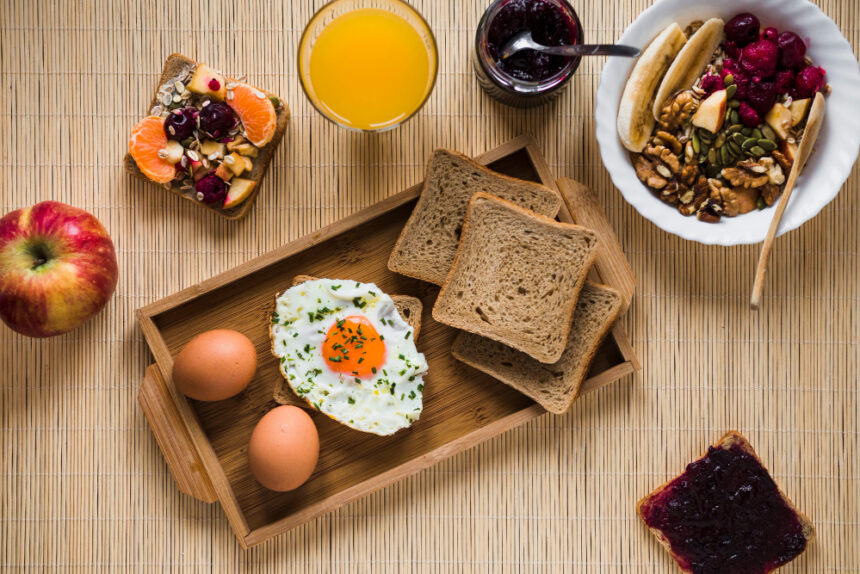In the tumultuous journey of adolescence, where change is the only constant, one aspect remains steadfast – the need for proper nutrition. As teenagers undergo rapid physical and mental development, their dietary requirements are in a constant state of flux. This is why a well-structured and balanced diet is not just a choice but a necessity. In this blog post, we will delve into the intricacies of creating a comprehensive Diet Chart for Teenagers for a Week.
Teenagers are at a critical juncture in their lives, marked by growth spurts, hormonal changes, and increased physical activity. The choices they make in terms of nutrition can significantly impact their overall health, energy levels, and cognitive function. It’s not just about eating; it’s about eating right.
The primary objective of this blog post is to provide you with a practical and easy-to-follow diet plan tailored to meet the specific dietary needs of teenagers. We understand that guiding a teenager’s food choices can be a daunting task, given their evolving tastes and preferences. However, by the post, you’ll be equipped with a Diet Chart for Teenagers for a Week that strikes a perfect balance between taste and nutrition.
Understanding Teenage Nutritional Needs for a Diet Chart for Teenagers for a Week
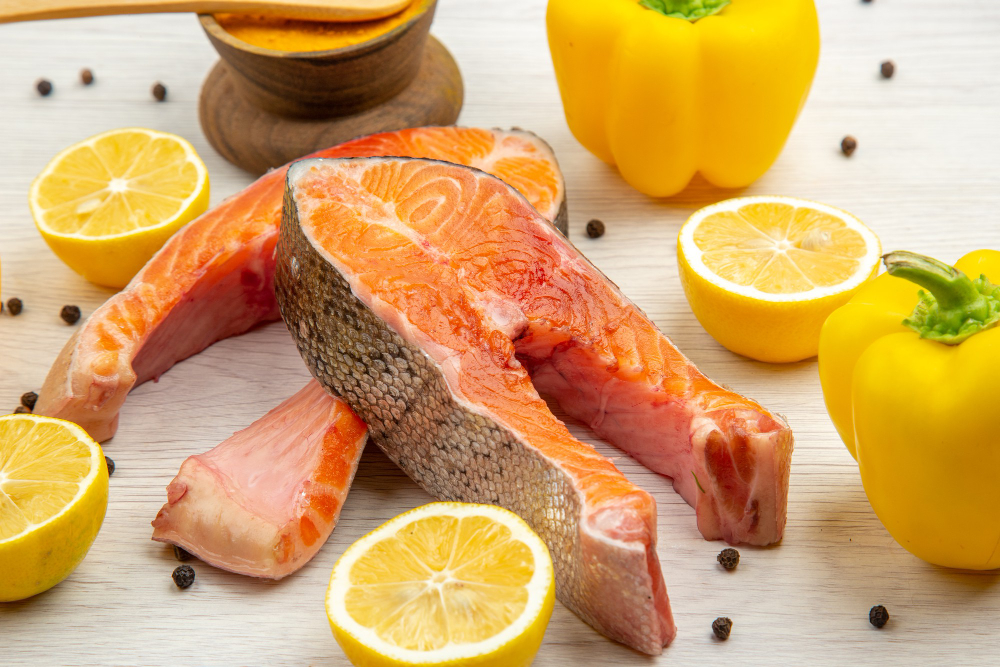
To create an effective Diet Chart for Teenagers for a Week, it’s essential to comprehend the unique nutritional requirements of adolescents. Adolescence is a transformative phase, marked by rapid physical growth, cognitive development, and hormonal changes. Proper nutrition during this period plays a pivotal role in supporting overall health and ensuring that teenagers reach their full potential
- Increased Energy Demands: Adolescents have higher energy requirements due to growth spurts and increased physical activity. A well-balanced diet should provide the necessary calories to support their energy needs.
- Protein for Growth: Protein is a crucial component of a teenager’s diet as it aids in tissue growth and repair. Including lean protein sources in their meals is essential.
- Calcium and Bone Health: Teenagers require adequate calcium for the development of strong bones and teeth. This is particularly vital during growth spurts.
- Iron for Blood Health: As teens grow, their blood volume increases, making iron crucial for optimal oxygen transport. Iron-rich foods should be part of their diet.
- Folate and Brain Development: Folate, a B-vitamin, plays a key role in brain development and cognitive function. Foods rich in folate should be included.
- Healthy Fats for Brain Function: Essential fatty acids, like omega-3s, are vital for brain function. These can be obtained from sources like fish and nuts.
- Hydration: With their active lifestyles, teenagers need to stay well-hydrated. Encourage them to drink plenty of water throughout the day.
- Balanced Nutrition: Emphasize the importance of a well-rounded diet that includes a variety of food groups, such as fruits, vegetables, whole grains, lean proteins, and dairy or dairy alternatives.
General Dietary Guidelines for Teenagers: Building the Foundation for a Diet Chart for Teenagers for a Week
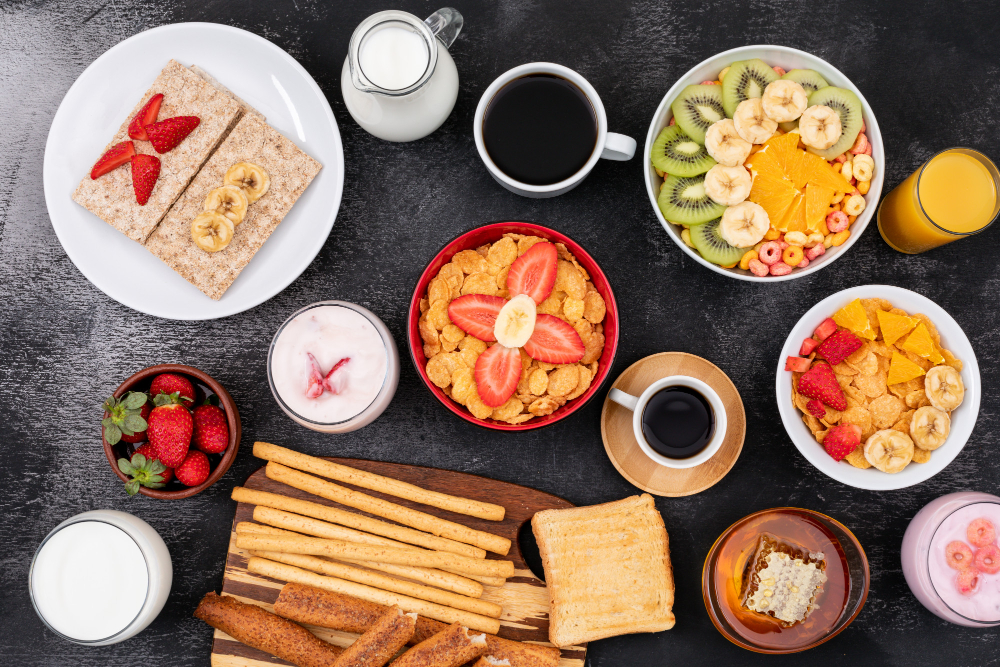
When crafting a Diet Chart for Teenagers for a Week, it’s crucial to begin with a solid foundation of general dietary guidelines. These guidelines serve as the framework for ensuring that your teenager receives the necessary nutrients to support their growth, development, and overall well-being.
- Balanced and Varied Diet: The cornerstone of a healthy diet for teenagers is balance and variety. Encourage your teenager to consume a wide range of foods from all food groups, including fruits, vegetables, whole grains, lean proteins, and dairy or dairy alternatives.
- Portion Control: Teach your teenager about portion sizes to prevent overeating. Understanding appropriate portion sizes can help them maintain a healthy weight.
- Regular Meals and Snacks: Advise your teenager to eat regular meals and snacks throughout the day. Skipping meals can lead to overeating later and affect their energy levels.
- Hydration: Staying hydrated is vital for overall health and energy. Encourage your teenager to drink plenty of water and limit sugary beverages.
- Limit Sugary and Processed Foods: While occasional treats are fine, it’s important to limit sugary snacks and processed foods, which can lead to empty calories and potential health issues.
- Moderation in High-Fat and High-Sugar Foods: While it’s okay to enjoy high-fat or high-sugar foods occasionally, these should not be the primary components of their diet.
- Breakfast is Essential: Stress the importance of a nutritious breakfast to kickstart the day. A balanced breakfast provides energy and helps with concentration in school.
- Mindful Eating: Encourage your teenager to eat mindfully, paying attention to hunger and fullness cues. This can prevent overeating and promote a healthy relationship with food.
Simple Diet Chart for a Week: A Practical Guide for a Diet Chart for Teenagers for a Week
Creating a Diet Chart for Teenagers for a Week involves careful planning to ensure that your teenager receives the right balance of nutrients. In this section, we will provide you with a detailed day-by-day breakdown of meals and snacks for a week. This sample meal plan will serve as a practical guide, offering you ideas on how to structure your teenager’s diet to meet their unique nutritional needs.
Day 1: Balanced Breakfast, Nutrient-Packed Lunch, Light Dinner, and Snacks
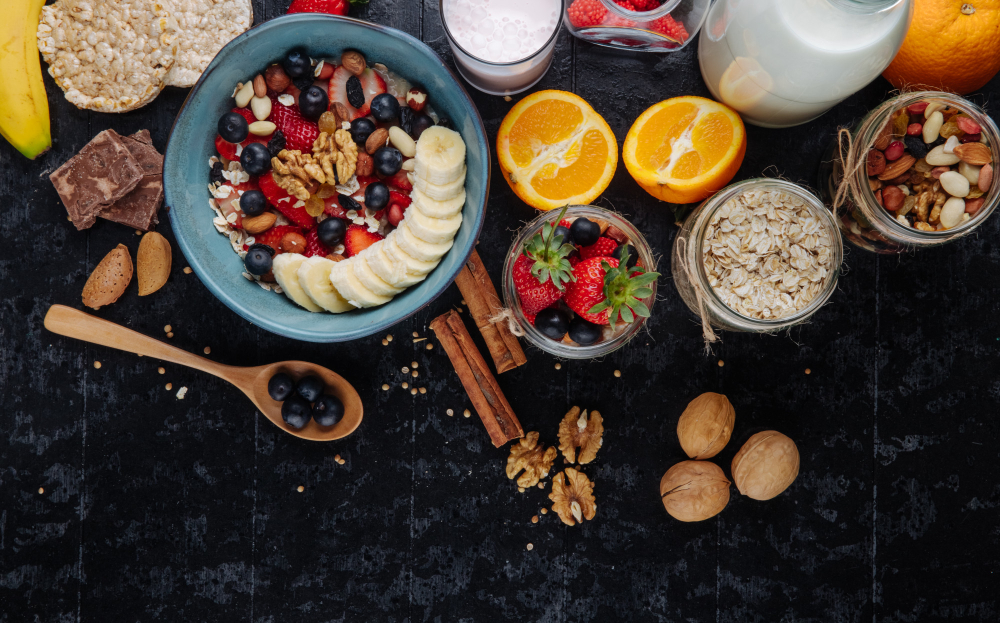
Breakfast:
- Whole-grain cereal with low-fat milk or a dairy-free alternative
- Sliced banana or berries for added fiber and vitamins
Lunch:
- Grilled chicken or tofu sandwich with whole-grain bread
- A generous serving of mixed greens with a variety of colorful vegetables
- Hummus and carrot sticks for a healthy side
- A piece of fruit like an apple or orange for dessert
Dinner:
- Baked salmon or a plant-based protein source like lentils
- Steamed broccoli and quinoa
- A side salad with vinaigrette dressing
Snacks:
- Greek yogurt with honey and a sprinkle of almonds
- Sliced cucumbers with a light dip
This example for Day 1 offers a well-rounded menu that includes lean protein sources, whole grains, plenty of vegetables, and healthy snacks. You can use this as a template for the rest of the week, making adjustments to accommodate your teenager’s taste preferences and dietary restrictions.
In the following days, we’ll continue to provide you with meal plans that incorporate a variety of foods to ensure your teenager receives the nutrients they need for optimal growth and development. Whether your teenager prefers vegetarian or non-vegetarian options, we’ve got you covered.
Day 2: Incorporating Fruits and Vegetables
In Day 2 of our Diet Chart for Teenagers, we’ll focus on the importance of incorporating fruits and vegetables into your teenager’s diet. This day will showcase how to make these nutritious foods a delicious part of every meal.
Breakfast:
- Oatmeal topped with sliced strawberries and a drizzle of honey
- A glass of 100% orange juice (in moderation)
Lunch:
- Spinach and feta stuffed whole-wheat pita pockets
- A side salad with mixed greens, cherry tomatoes, and cucumber
- Sliced melon for dessert
Dinner:
- Vegetable stir-fry with tofu or shrimp
- Brown rice as a healthy, fiber-rich base
Snacks:
- Apple slices with a small amount of peanut butter
- A handful of baby carrots with hummus
This menu demonstrates how to make fruits and vegetables a central part of your teenager’s daily meals. They’re not only packed with essential vitamins and minerals but also add vibrant flavors and textures to the plate.
Day 3: Protein-Rich Options for Growing Teens
On Day 3 of our Diet Chart for Teenagers, we’ll focus on the importance of incorporating protein-rich foods into your teenager’s diet. Protein is crucial for growth and repair, making it an essential nutrient during the adolescent years.
Breakfast:
- Scrambled eggs with spinach and diced tomatoes
- Whole-grain toast or a whole-grain English muffin
- A glass of milk or a dairy-free alternative
Lunch:
- Turkey or avocado wrap with whole-grain tortillas
- Sliced bell peppers and cherry tomatoes with a yogurt-based dip
- A serving of mixed berries for dessert
Dinner:
- Grilled chicken or chickpea (for a vegetarian option) salad with mixed greens
- Quinoa or whole-grain couscous as a side
- Light vinaigrette dressing
Snacks:
- Cottage cheese with pineapple chunks
- A handful of almonds or walnuts
This menu provides ample protein from sources like eggs, poultry, legumes, and dairy. Adequate protein intake is vital for your teenager’s physical development and overall well-being.
Day 4: Whole Grains and Fiber
Day 4 of our Diet Chart for Teenagers you can emphasizes the importance of whole grains and fiber in your teenager’s diet. These nutrient-rich foods are essential for digestive health and sustained energy.
Breakfast:
- Whole-grain pancakes topped with fresh berries and a dollop of yogurt
- A glass of water or herbal tea
Lunch:
- Whole-grain pasta with a tomato and vegetable sauce
- A side of steamed broccoli or spinach
- A small slice of whole-grain garlic bread
Dinner:
- Grilled shrimp or a tofu stir-fry with brown rice
- A side of sautéed kale or Swiss chard
Snacks:
- Whole-grain crackers with low-fat cheese or a dairy-free alternative
- Sliced cucumber with a sprinkle of sea salt
This menu showcases the delicious possibilities of incorporating whole grains into your teenager’s daily meals. Whole grains like oats, quinoa, and brown rice provide essential fiber and nutrients.
Continue to follow our meal plans for the remaining days of the week, incorporating a variety of nutrient-rich foods to ensure your teenager receives a balanced and nutritious diet.
Day 5: Healthy Fats for Brain Health
In Day 5 of our Diet Chart for Teenagers for a Week, we’ll focus on healthy fats, particularly omega-3 fatty acids, which are crucial for brain health and cognitive development.
Breakfast:
- Smoked salmon and avocado on whole-grain toast
- A small glass of freshly squeezed orange juice
Lunch:
- Spinach and mixed greens salad with grilled mackerel or a plant-based omega-3 source like flax seeds or walnuts
- Balsamic vinaigrette dressing
Dinner:
- Baked trout or a vegetarian alternative like tofu with quinoa
- Steamed asparagus with a drizzle of olive oil and lemon
Snacks:
- Greek yogurt parfait with blueberries and a sprinkle of chia seeds
- Sliced bell peppers with guacamole
This menu showcases foods rich in healthy fats, particularly omega-3 fatty acids, which support brain function and cognitive development in teenagers. Including these fats in their diet is essential during the formative adolescent years.
Continue reading for more sample meal plans to complete a balanced week of nutrition for your teenager.
Day 6: Hydration and Beverages
Day 6 of our Diet Chart for Teenagers for a Week emphasizes the importance of proper hydration and choosing healthy beverage options for teenagers.
Breakfast:
- A smoothie made with spinach, banana, Greek yogurt, and a dash of honey
- A glass of water or herbal tea
Lunch:
- Grilled chicken or tempeh salad with a colorful array of vegetables
- A side of fresh fruit salad
Dinner:
- Whole-grain spaghetti with a tomato and vegetable sauce
- A side of cucumber and tomato salad with a light vinaigrette
Snacks:
- Watermelon slices for a hydrating snack
- A handful of mixed nuts
This menu emphasizes the importance of staying well-hydrated throughout the day. Proper hydration is essential for overall health, energy levels, and concentration.
Day 7: Balanced Snacking and Meal Prep Tips
On the final day of our Diet Chart for Teenagers, we’ll explore balanced snacking options and provide meal prep tips to help your teenager maintain a healthy diet, even in the midst of a busy schedule.
Breakfast:
- Whole-grain waffles with a dollop of yogurt and a sprinkle of mixed berries
- A glass of milk or a dairy-free alternative
Lunch:
- Turkey or veggie wrap with whole-grain tortillas
- A side of mixed greens with a variety of colorful vegetables
- A serving of sliced melon for dessert
Dinner:
- Grilled salmon or a plant-based protein source like chickpeas with quinoa
- Steamed broccoli and a side salad with vinaigrette dressing
Snacks:
- A small handful of whole-grain crackers with hummus
- Sliced cucumbers and carrot sticks for a refreshing snack
This menu provides a balanced day of meals and snacks, ensuring that a teenager receives essential nutrients while enjoying a variety of delicious foods.
Special Considerations and Tips
In this section of our Diet Chart , we’ll address special considerations and offer tips to help you customize the meal plan to your teenager’s individual dietary preferences, allergies, intolerances, and restrictions.
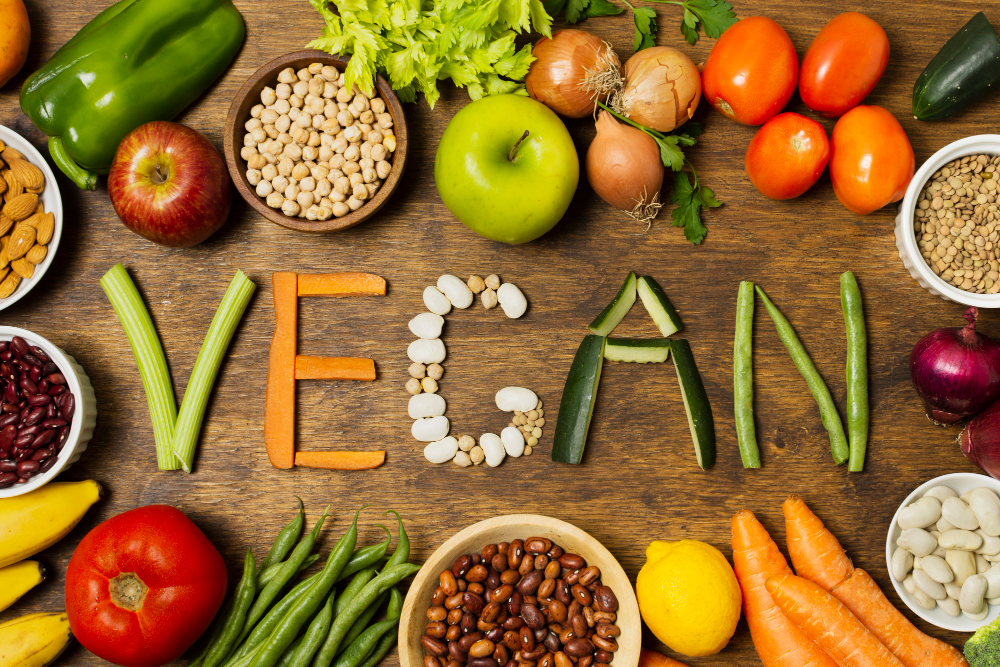
Vegetarian or Vegan Options:
- If your teenager follows a vegetarian or vegan diet, you can easily adapt the meal plan by substituting animal-based proteins with plant-based sources like tofu, tempeh, legumes, and nuts. Ensure they get sufficient iron and vitamin B12 through fortified foods or supplements if necessary.
Food Allergies and Intolerances:
- If your teenager has food allergies or intolerances, be diligent about checking ingredient labels and avoid foods that trigger allergic reactions or discomfort. Seek alternative ingredients or recipes to accommodate their needs.
Gluten-Free Diet:
- If your teenager requires a gluten-free diet due to celiac disease or gluten sensitivity, choose gluten-free grains like rice, quinoa, and certified gluten-free oats. Use gluten-free flours for baking.
Lactose Intolerance or Dairy-Free Diet:
- If lactose intolerance is a concern, opt for lactose-free or dairy-free milk and dairy alternatives like almond milk, soy yogurt, or lactose-free cheese.
Nutritional Supplements:
- In some cases, teenagers may benefit from nutritional supplements, such as vitamin D or calcium supplements if they have limited sun exposure or low dairy consumption. Consult a healthcare professional before introducing supplements. Eating Out and On the Go:
- Teach your teenager how to make healthier choices when eating out or grabbing food on-the-go. Encourage them to opt for grilled or baked options over fried, and choose water or unsweetened beverages.
Meal Prep and Planning:
- Implement meal prep strategies to make it easier to stick to the diet chart, even on busy days. Prepare snacks and meals in advance to ensure they have access to nutritious options throughout the week.
Consult a Dietitian:
- If you have specific concerns or questions about your teenager’s dietary needs, consider consulting a registered dietitian or nutritionist. They can provide personalized guidance and ensure your teenager’s diet is meeting their unique requirements.
By considering these special considerations and tips, you can tailor the Diet Chart for Teenagers for a Week to suit your teenager’s individual needs and dietary preferences. It’s important to create a plan that not only promotes good health but also accommodates their tastes and lifestyles.
Conclusion
In conclusion, a well-planned Diet Chart for Teenagers for a Week can be a valuable tool for ensuring that a teenager receives the necessary nutrients to support their growth, development, and overall health. By understanding their specific nutritional needs, following general dietary guidelines, and customizing the meal plan to accommodate individual preferences and restrictions, you can receive a balanced and nourishing diet.
Remember that healthy eating is not just about the food itself but also about fostering a positive relationship with food and promoting mindful eating habits. Encourage a teenager to be involved in meal planning and preparation, and use this opportunity to educate them about the importance of making nutritious choices.
As teenager navigates the complex and exciting journey of adolescence, a well-balanced diet will serve as a foundation for their physical and mental well-being.
FAQ:
1. Why is it important for teenagers to have a balanced diet?
- A balanced diet is crucial for teenagers because it supports their rapid growth and development during adolescence. It provides essential nutrients for physical health, cognitive function, and overall well-being.
2. Can I personalize the diet chart to my teenager’s specific dietary preferences?
- Absolutely! The provided meal plan serves as a template. You can customize it to accommodate your teenager’s dietary preferences, whether they are vegetarian, vegan, have allergies, or follow specific dietary restrictions.
3. How do I ensure my teenager gets enough calcium if they are lactose intolerant or dairy-free?
- You can choose dairy-free alternatives like almond milk, soy yogurt, or fortified dairy-free products that contain calcium. Additionally, there are calcium supplements available, but consult a healthcare professional before using them.
4. Are there any healthy snacks for teenagers included in the diet chart?
- Yes, the diet chart includes suggestions for healthy snacks, such as yogurt with fruit, sliced vegetables with hummus, nuts, and fresh fruit. These options provide nutritious between-meal choices.
5. What should I do if my teenager has a busy schedule and can’t always sit down for meals?
- Meal prep can be a solution. Prepare nutritious meals and snacks in advance, making it easier for your teenager to grab healthy options on the go. Portable choices like whole-grain wraps or trail mix can be handy.
6. How can I encourage my teenager to make healthier choices when eating out with friends?
- Educate your teenager about making healthier choices when dining out. Encourage them to opt for grilled or baked dishes, choose water or unsweetened beverages, and practice portion control.
7. Is it necessary for teenagers to take nutritional supplements?
- Nutritional supplements should be considered on an individual basis. If your teenager’s diet lacks specific nutrients or if they have dietary restrictions, consult a healthcare professional or dietitian for guidance on whether supplements are necessary.
8. What are some good sources of omega-3 fatty acids for brain health in teenagers?
- Excellent sources of omega-3 fatty acids include fatty fish like salmon, flax seeds, chia seeds, walnuts, and hemp seeds. These foods can be included in your teenager’s diet to support brain health.
9. How can I help my teenager develop a healthy relationship with food and avoid unhealthy eating habits?
- Foster a positive food environment by promoting mindful eating, emphasizing balance, and avoiding strict diets or food shaming. Encourage open communication about nutrition and body image.
10. Are there any apps or websites that can help with meal planning and tracking nutrition for teenagers?
- Yes, there are various apps and websites designed to assist with meal planning and nutrition tracking. Some popular ones include MyFitnessPal, Cronometer, and Yummly. These tools can help teenagers make informed food choices.







